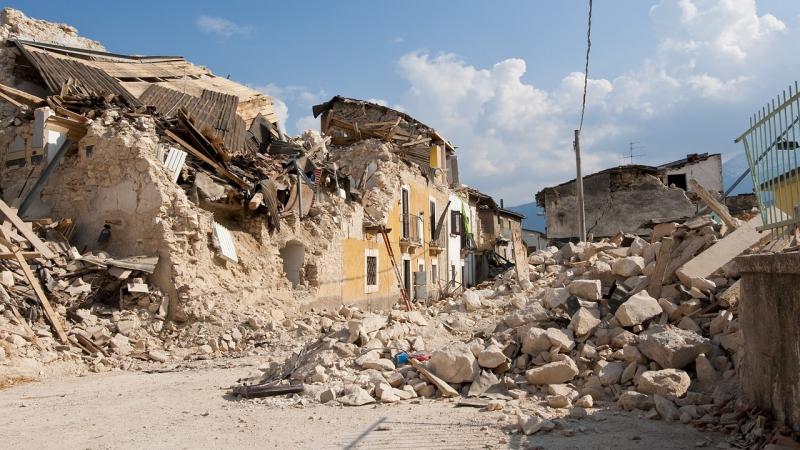
About five earthquakes of magnitude 5.0 or higher on the Ritcher scale occur on our planet every day. Earthquakes can be devastating, of themselves and through after-effects like tsunamis. While the damage due to an earthquake depends, naturally, on its intensity and the distance from the epicentre, the nature of the soil of a region also plays a crucial role.
In a recent study, researchers from the Indian Institute of Science, Bengaluru, King Saud University, Saudi Arabia, and Bhabha Atomic Research Centre, Mumbai, have reported a method to better identify building sites with soil that could be susceptible to damage from earthquakes. The findings of the study were published in the journal PLOS One.
Soil, which is the uppermost layer of the Earth's crust, is made of layers of varying thickness, culminating in what is called bedrock. The energy released in an earthquake vibrates this bedrock, and these vibrations propagate upwards. The different layers of soil between the bedrock and the surface are akin to springs of different stiffnesses—hard rocky soil layers act like stiff springs which vibrate only as much as (and in sync with) the bedrock, while softer soil layers act like weak springs, and can thus undergo much bigger displacements. If buildings aren't designed to account for the nature of the soil where they are built, they can be structurally damaged due to these oscillations.
The net effect of all the layers of soil from the surface to the bedrock gives the overall rigidity of the ground at a given location. "This net rigidity can be very different even for sites within short distances of each other", say the authors of the study. Hence, every building site could be classified into one of six groups, called site classes, from the strongest to the weakest.
The stiffness of a layer of soil is estimated by measuring how fast shear waves move through it. Shear waves are waves in which oscillations are perpendicular to the direction of wave propagation, akin to how the ripples in a pond move outwards when you throw a stone, although the water at any point moves up and down. Shear waves move faster through stiffer soil than through loose soil.
Measuring the velocities of the shear waves requires expensive equipment and drilling at least one borehole. Alternatively, the quality of a building site can also be classified using a metric called the standard penetration resistance (SPR), which is less expensive. The SPR is the number of blows it takes for a hammer that weighs 63.5 kg and falls from a distance of 760 mm, to push a metal tube into the soil by one foot. The higher the resistance, the harder is the soil and (typically) has a higher shear wave velocity. Put differently, materials that resist being punched through will also resist being shaken about.
The shear wave velocities and the standard penetration resistance are measured for the top 30 metres of the soil, and anything below is assumed to be of the same stiffness as the deepest layer. "But when the bedrock is within 30 meters of the top, this procedure results in an overestimation of the strength of the soil", point out the authors. Instead, in cases where the bedrock is shallower than 30 metres, they suggest using measurements of the velocity or the resistance only up to the bedrock.
The researchers measured shear wave velocities at 63 sites across southern India, in Bangalore, Coimbatore, Chennai and Vizag, where the bedrock is shallower than 30 metres. They found that the average velocity up to the bedrock, and that up to 30 metres, correlate with each other. However, the former is always smaller than the latter because the latter includes measurements of shear velocity from the bedrock, which biases the average.
The researchers then applied this idea to data from 12 sites from the Kiban-Kyoshin Network, a seismograph network in Japan whose data is freely accessible, where the bedrock is shallower than 30 metres. This database has measurements of actual ground motion at the surface and at the bedrock recorded by dropping sensors down a borehole during earthquakes, in addition to shear wave velocity measurements.
The ratio of motion at the surface and that at the bedrock, called site amplification, is inversely related to the rigidity of the soil. This value can be used to test the prediction that average shear wave velocity up to the bedrock is a better indicator of the soil stiffness.
"The prediction holds true for the small number of sites we studied. This preliminary finding will be tested against larger datasets", say the authors. The resulting measurements can then lead to better indicators of earthquake impact at sites with shallow depths to bedrock. Since the location and design of buildings determine the damage earthquakes can cause, this study is a step towards enabling better choices for these factors.
This article has been run past the researchers, whose work is covered, to ensure accuracy.






